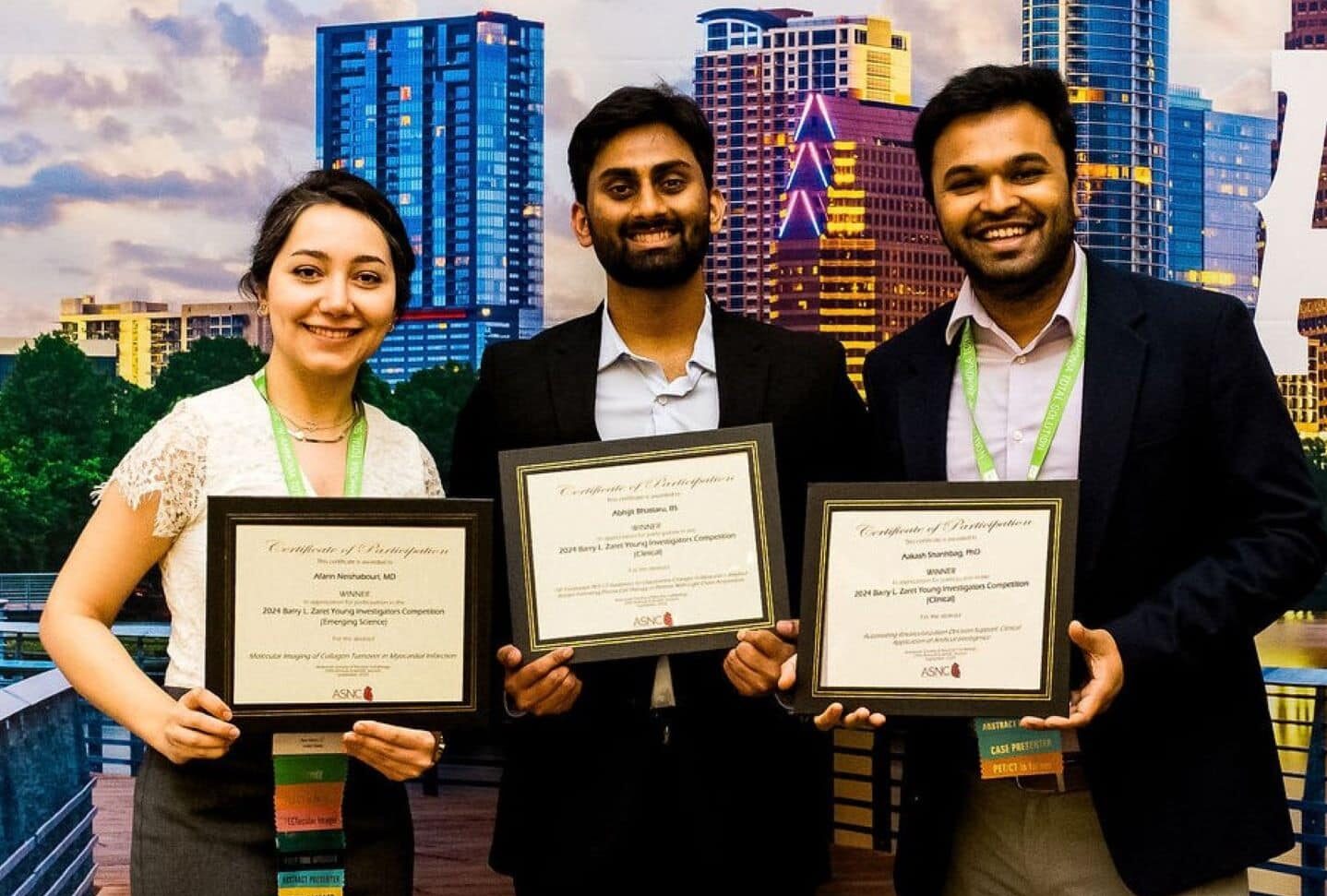ASNC Announces Young Investigator Award Winners
Images

The American Society of Nuclear Cardiology (ASNC) announced the winners of the Young Investigator Award at its annual meeting in Austin, TX.
This year’s competition for Best Clinical Abstract Award ended in a tie, with Aakash Shanbhag, MS, and Abhijit Bhattaru, BS, sharing the honor. The winner of the Best Emerging Science Abstract Award went to Afarin Neishabouri, MD.
Shanbhag’s paper, “Enhanced Risk Prediction for Cardiac PET/CT Using Cardiac Chamber Volumes and Myocardial Mass Derived From CT Attenuation Maps Using Deep Learning,” reported that AI can automatically derive LV mass and cardiac chamber volumes from CT attenuation imaging, which provide additional information in cardiovascular risk assessment after PET/CT.
In the paper, “18F-Florbetapir PET/CT Radiomics To Characterize Changes in Myocardial Amyloid Burden Following Plasma Cell Therapy in Patients With Light Chain Amyloidosis,” Bhattaru and co-authors found that 18F-florbetapir radiomics shows promise in assessing changes in myocardial amyloid burden in patients with AL cardiomyopathy.
Dr Neishabouri and colleagues demonstrated in a mouse study that 99mTc-(HE)3-(GPO)9 SPECT/CT can detect col turnover post-myocardial infarction. The paper, “Molecular Imaging of Collagen Turnover in Myocardial Infarction,” suggests that this imaging technique may be a valuable tool for tracking the evolution of fibrosis and the effect of emerging anti-fibrotic therapies in cardiomyopathy.
ASNC’s Barry L. Zaret Young Investigator Awards Competition is an opportunity for early-career investigators to make a name for themselves as up-and-coming researchers while earning cash prizes. Each year, the Society invites qualified investigators to submit their original clinical or emerging science abstracts for consideration. The Annual Scientific Session Program Committee’s Research and Abstracts Track team selects six finalists from the top-scoring abstract submissions to compete in the in-person competition. The competition, held at the annual meeting, features each finalist giving a 7- to 8-minute presentation of their abstract and answering a few questions from the judges and session attendees.